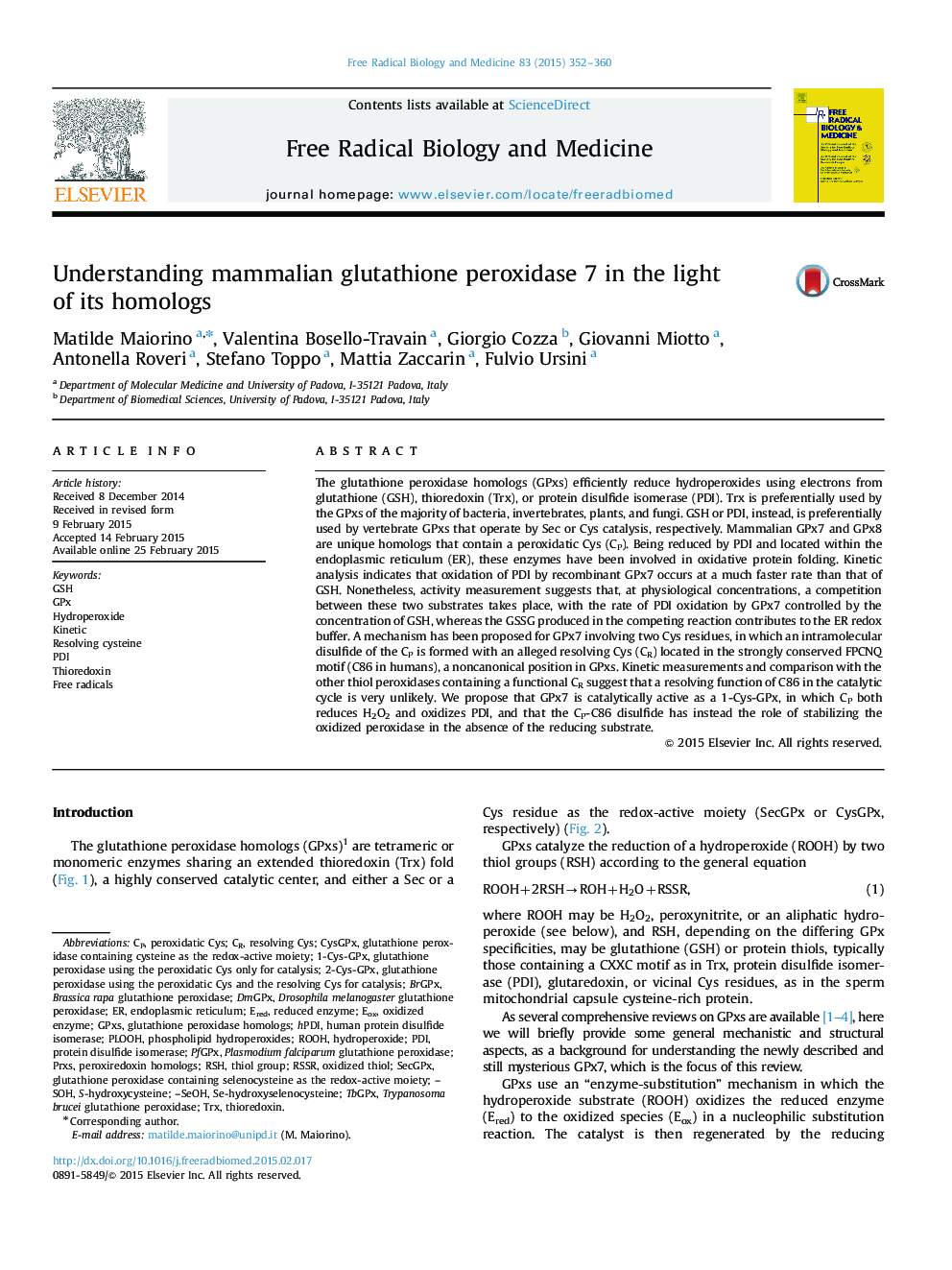| کد مقاله | کد نشریه | سال انتشار | مقاله انگلیسی | نسخه تمام متن |
|---|---|---|---|---|
| 1907944 | 1534959 | 2015 | 9 صفحه PDF | دانلود رایگان |
• GPx7 acts via a 1-Cys mechanism and does not require C86 as a resolving Cys.
• Kinetics indicates that PDI and GSH are alternate electron donors for GPx7.
• PDI oxidation by GPx7 is controlled by the concentration of GSH.
• The disulfide CP-C86 seemingly “parks” the oxidized form of GPx7.
• This might generate a new surface for specific protein interaction.
The glutathione peroxidase homologs (GPxs) efficiently reduce hydroperoxides using electrons from glutathione (GSH), thioredoxin (Trx), or protein disulfide isomerase (PDI). Trx is preferentially used by the GPxs of the majority of bacteria, invertebrates, plants, and fungi. GSH or PDI, instead, is preferentially used by vertebrate GPxs that operate by Sec or Cys catalysis, respectively. Mammalian GPx7 and GPx8 are unique homologs that contain a peroxidatic Cys (CP). Being reduced by PDI and located within the endoplasmic reticulum (ER), these enzymes have been involved in oxidative protein folding. Kinetic analysis indicates that oxidation of PDI by recombinant GPx7 occurs at a much faster rate than that of GSH. Nonetheless, activity measurement suggests that, at physiological concentrations, a competition between these two substrates takes place, with the rate of PDI oxidation by GPx7 controlled by the concentration of GSH, whereas the GSSG produced in the competing reaction contributes to the ER redox buffer. A mechanism has been proposed for GPx7 involving two Cys residues, in which an intramolecular disulfide of the CP is formed with an alleged resolving Cys (CR) located in the strongly conserved FPCNQ motif (C86 in humans), a noncanonical position in GPxs. Kinetic measurements and comparison with the other thiol peroxidases containing a functional CR suggest that a resolving function of C86 in the catalytic cycle is very unlikely. We propose that GPx7 is catalytically active as a 1-Cys-GPx, in which CP both reduces H2O2 and oxidizes PDI, and that the CP-C86 disulfide has instead the role of stabilizing the oxidized peroxidase in the absence of the reducing substrate.
Figure optionsDownload high-quality image (127 K)Download as PowerPoint slide
Journal: Free Radical Biology and Medicine - Volume 83, June 2015, Pages 352–360
